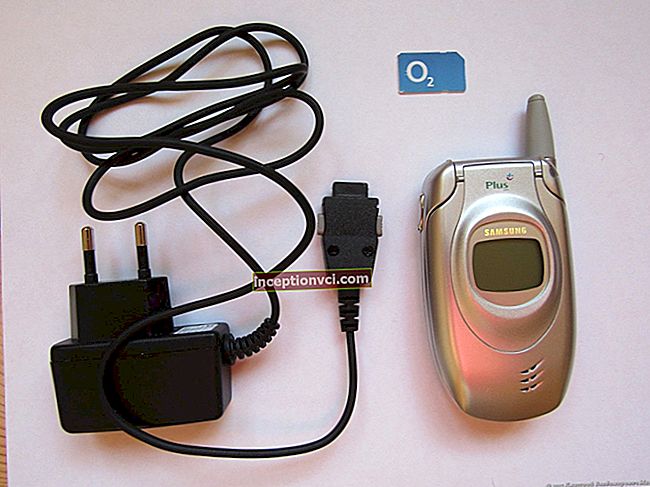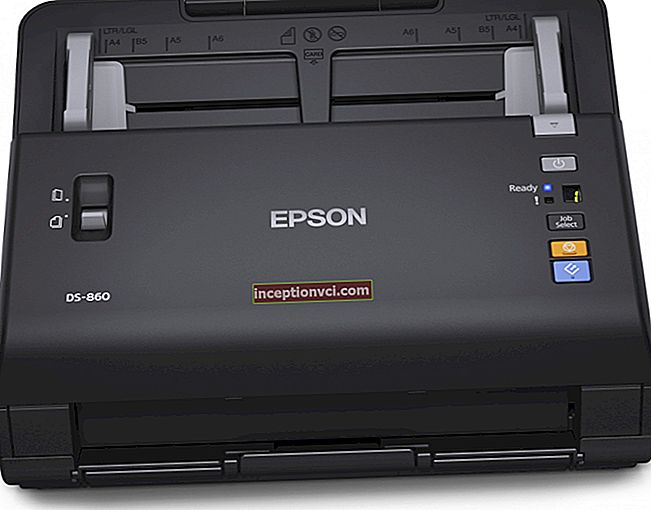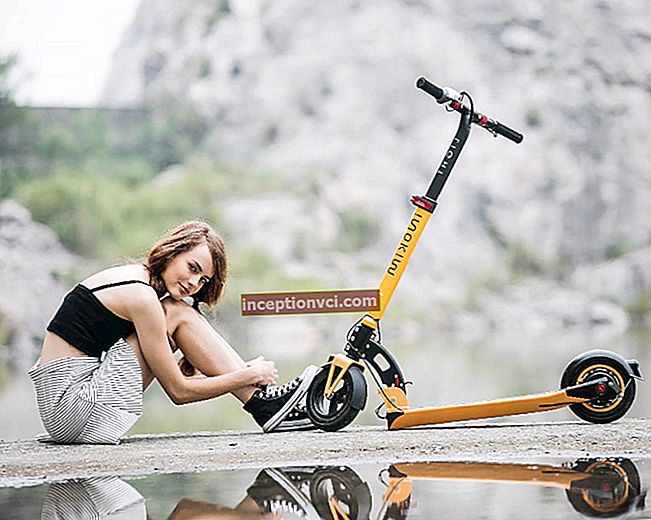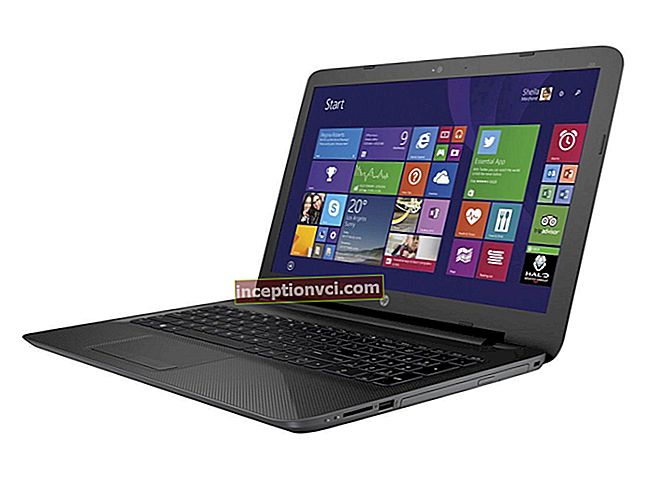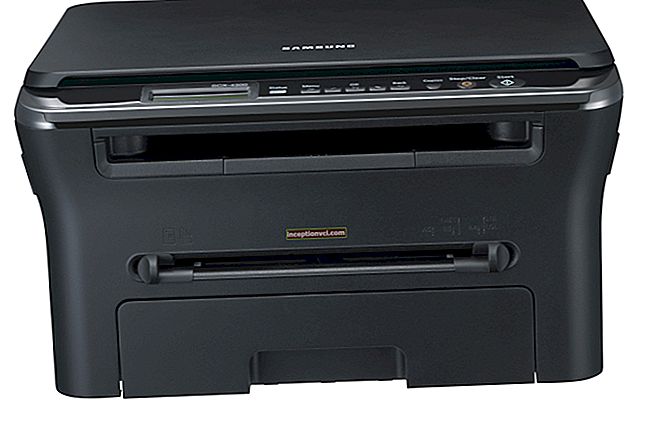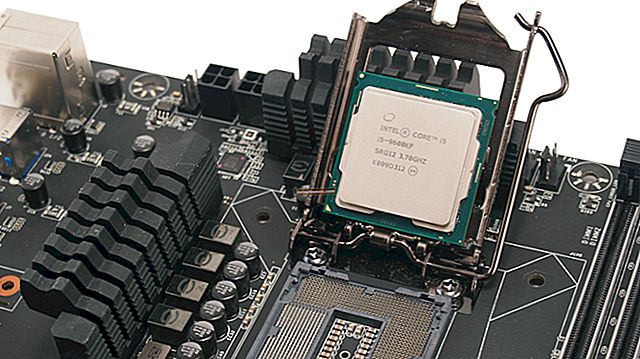Garmin GPSMAP 60 - Combat GPS Navigators
This review focuses on three Garmin workhorses, the GPSMAP 60CSX.
For several years in a row, Garmin has been a well-deserved number one in reliable portable navigators designed for use in almost any conditions, be it mountains, forests, or places with adverse weather conditions. Among all the devices manufactured by Garmin, pride of place was taken by models ready for any use in very harsh conditions. These navigators can be safely included in the list of things and equipment that will be useful for you to survive in the most extreme conditions. They are protected from such factors unfavorable for any technique as water, humidity, frost, as well as crooked hands of users. These are real "combat" models that have been used for many years as navigators in the car, hunting, fishing, mountain biking, hiking, safari and urban jungle. Navigators of this series appeared in the middle of 2004, during this relatively short period of time they managed to earn top ratings from users and observers all over the world, positive reviews from rescue services and just people for whom extreme recreation has become the norm. Currently, as GPS receivers are migrating to the new SIRFStar III chip, Garmin continues to update its lineup, so navigators, already proven in difficult conditions, are being reborn. So here's the legend of navigation, the GPSMAP 60 series.

GPSMAP: 60 to 60CSX
Perhaps Garmin's most famous navigator is the Garmin eTrex. With its low price and such important indicators as ease of use, unsurpassed reliability, it ranks first in sales of equipment of this class, and has already managed to earn trust among buyers. The company was faced with the task of making a line of navigators of a higher level, which will combine the ease of use of the younger model, but will be technically much better equipped. This is how the already well-known series of portable navigators GPSMAP 60 appeared. At the moment, this series includes three navigators, technically different in equipment and in different price categories.

In the most extreme conditions
Garmin GPSMAP 60 Series GPS Navigators | |||
Model | GPSMAP 60 | GPSMAP 60CX | GPSMAP 60CSX |
Photo |
|
|
|
GPS receiver type | 12-channel | 12-channel SIRFStar III | 12-channel SIRFStar III |
Number of route points | 500 | 500 | 500 |
Built-in memory | 24 MB | MicroSD Flash Card 64 Mb (included) | MicroSD Flash Card 64 Mb (included) |
Cards | MapSource CD-ROM | MapSource CD-ROM + maps on a stick | MapSource CD-ROM + maps on a stick |
Compatible with Routing Russian Roads Maps | Yes | Yes | Yes |
Food | 2 AA batteries | 2 AA batteries | 2 AA batteries |
Battery life, h | up to 28 | before 18 | before 18 |
Screen dimensions, mm | 55x37 | 55x37 | 55x37 |
Screen type | LCD, 4 levels of gray | 256-color TFT | 256-color TFT |
Screen resolution, pix. | 240x160 | 240x160 | 240x160 |
Antenna | Pinned Quad Helix | Pinned Quad Helix | Pinned Quad Helix |
Return trip mode | Yes | Yes | Yes |
Number of points of the traversed path | up to 10,000 | up to 10,000 | up to 10,000 |
Weight, g. | 153 | 153 | 153 |
Sound warnings | Yes | Yes | Yes |
Enclosure protection standard | IPX7 | IPX7 | IPX7 |
Operating temperature range, оС | from -15 to 70 | from -15 to 70 | from -15 to 70 |
Dimensions, mm | 154x61x33 | 154x61x33 | 154x61x33 |
Interface | USB and Serial | USB and Serial | USB and Serial |
Screen backlight | Multistage | Multi-stage, customizable | Multi-stage, customizable |
Connecting an external antenna | Yes | Yes | Yes |
Support for WAAS / EGNOS, MGRS | Yes | Yes | Yes |
Compass | Not | Not | Yes |
The presence of a barometer | Not | Not | Yes |
Distance to target height | Not | Not | Yes |
Vertical speed | Not | Not | Yes |
Route step-by-step instructions | Yes | Yes | Yes |
Fishing / hunting prediction | Yes | Yes | Yes |
Waypoint proximity alert | Yes | Yes | Yes |
Forecasting ebb and flow | Yes | Yes | Yes |
Waypoint icons | Yes | Yes | Yes |
Price | Specify | Specify | Specify |
These three models belong to the class of "chartplotters", devices that are capable of plotting routes over maps loaded into them.The 60 series models have the same housing, which we will talk about separately, and all of them are equipped with a pin antenna for more reliable signal reception in adverse conditions. As you can see from the above table, the characteristics of the models are similar, and it will be much easier to say what the differences between the models are: GPSMAP60 is the simplest model of the three, it has a black and white LCD screen with four grayscale levels, there is 24 MB of internal memory on board. , with the impossibility of expansion. The GPSMAP 60Cx already has expandable memory, a 256 color TFT screen and the most reliable GPS receiver chip, the SIRFStar III. The top navigator (model 60CSX) has a built-in barometer and compass.
It is known that an ordinary navigator can determine the direction of a person's movement only when the latter is in motion. At that moment, when a person is in place, usually the device considers that he is looking in the direction in which he was moving until the moment of stopping, or it cannot determine the directions, believing that you are looking in one direction, then in the other. It also happens that a person cannot move to determine the direction. For example, when a person hunts, any movement can frighten off the beast. And in order to determine the direction of movement, a person will have to take several steps, which can scare away all the game. Or in gorges and impenetrable forests, the navigator may simply not pick up the signal from the satellite. This is where the compass comes to the rescue, for which a signal from the satellite is absolutely not needed, it can be very useful in extreme conditions.
The barometer will help you determine at what altitude you are, which is not always possible for other navigators. That is why, in the top Garmin models, which have a barometer function, the user has access to such opportunities as calculating the path to the target in height, speed in height and calculating what altitude you are at. These functions will primarily be in demand by climbers, travelers, and just those who love to conquer mountains. In addition to everything, they will be appreciated by lovers of parachute jumping and hang gliding. Probably many people know about the variability of the weather in the mountains, here again a barometer comes to the rescue, which will help determine the change in weather. It will determine the drop in atmospheric pressure and you will be able to take shelter in advance from the coming bad weather.

Use in a car
Currently, most of the portable equipment produced is available with built-in or replaceable lithium-ion batteries. But as you can see from the table above, all GPSMAP 60 series GPS navigators are powered by two AA batteries (note that these are not included in the package). Power in the car from the cigarette lighter is provided only with the purchase of an additional power cord. This type of power supply for navigators was not chosen by chance, Garmin did not want to save on Lion batteries at all. After all, this GPSMAP 60 series was designed primarily for use in places where electricity and recharging are not available. These are forests, mountains, fishing. For a tourist who goes on a hike for a week or two, he can simply take a set of spare batteries with him and in case of discharging the first ones, simply replace them. But the battery will have nowhere to charge.
The simplest navigator of the 60 series is the Garmin GPS 60. It is primarily intended for those who do not need a color screen and a barometer, or even work with downloadable maps. This is a simple portable navigator that will help you find your way home from the forest and mark your points on the map, as well as useful for fishermen to record the coordinates of the "bite".

Simplicity and conciseness of forms
The top model in the 60 Series is the GPSMAP 60CSx. On this model we will take a closer look at the GPSMAP60 series from Garmin.
Introducing the Garmin GPSMAP 60CSX

Delivery set of the device
In addition to the GPSMAP 60CSX navigator itself, the box contains:
- -Device for attaching and carrying the navigator on the belt;
- -USB cable for connecting to a computer to download maps;
- -User's Manual;
As mentioned earlier, batteries are not included in the package, but this is unlikely to be a problem for the buyer.
Additionally, you can purchase several useful accessories for more convenient use of the navigator. This is a cable for working from a cigarette lighter in a car, a stand for installation in a car or other mode of transport, an external antenna for better signal reception in adverse conditions, and a case for protection. But all this is optional. And now we will see what a pure navigator is.
Garmin GPSMAP 60CSX exterior
As you already know, the body of 60GPSMAP navigators is identical. Maybe the body of the navigator will seem bulky and inconvenient to someone, but in fact, it was created on the basis that it will be held and operated with one hand. It is convenient to operate it even with gloves.

The appearance of navigators
The shape of these GPS navigators can be compared to cell phones and walkie-talkies of the late 90s. The vertical orientation of the screen means that you need to hold the navigator with the antenna up. Extreme conditions of use of navigators also require extreme conditions of protection. That's why Garmin has made the body of this series made of durable plastic with rubber inserts.

Using a pin antenna for better signal reception
For better signal reception from the satellite, a pin antenna is installed at the top of the navigator, next to the antenna there is a power button. For the convenience of wearing the navigator (as we see in the photo), an eyelet is provided with which the 60CSX can be hooked onto a carabiner and hung on a belt.
Control elements are located under the screen in the lower part of the device case. The GPSMAP 60CSX is operated with 8 buttons and one 4-way joystick. All buttons are made of rubber, numbered and backlit in the dark.

Powered by two AA batteries
Note that an external antenna can be connected to the navigator, if desired, the socket for its connection is on the back side. The USB socket for communication between the device and the computer and the input for connecting an external power supply are also located on the back side. To prevent water from entering the device, all sockets are tightly closed with rubber plugs. The battery compartment is also reliably closed from moisture penetration inside with a sealing rubber gasket.

The flash memory card is installed under the batteries, similar to the SIM card in mobile phones.

256-color TFT screen
A well-readable 256-color TFT screen with the ability to change the degree of brightness is used to read data from the navigator screen. It is interesting to note that the brightness is adjusted by pressing the power button and then adjusting the control arrows. When the "power" key is pressed once, the backlight turns off completely, and the device switches to the power saving mode. When you press the same key a second time, the backlight is switched to the maximum brightness mode, for the convenience of reading data from the screen in the bright sun. When pressed a third time, the device is set to the previously set brightness value.
The assembly of the navigator is not satisfactory, the case is made with high quality. The parts of the device are well-matched to each other, which gives the impression of a monolith, a solid and reliable device that can even crack nuts. The entire GPSMAP 60 series is protected according to the international IPX7 standard, which means that the device is not afraid of water and can be immersed in liquid without fear of its further performance. Although this standard does not say anything about beer.

He's not even afraid of beer
Our subject GPSMAP 60CSX spent an hour in a mug of beer.After lying there for an hour, not only did he not get drunk, he also continued to work as if nothing had happened. It's safe to say that the first GPSMAP 60CSX test passed, now it's time to put it to the test.
Navigator software capabilities We have already talked many times about what the 60th series navigators are for. This is primarily active recreation - tourism, hunting and fishing. We have already made sure of this by examining the design of the device, now it's time to consider the software capabilities of the device. When we turn on the device, the first thing we saw is a map with which your location is displayed, as well as other useful information. Example of a device map On the screen, on top of the map, you can see such necessary parameters as the battery charge level, indication of the navigator's operation from an external power source, signal reception level, indication of communication with a computer, as well as screen backlighting. As you move the cursor across the screen, the coordinates of the point, street names and a compass arrow are displayed on the map. When you press the Quit button, you can choose to display the trip computer, information about the level and availability of satellite signals, a barometer or a compass. Trip computer On the trip computer, information about the speed and distance that you have passed is available, plus, using the built-in barometer, you can determine the current altitude. The following information is displayed on the navigator screen using the trip computer: The trip computer gives out about forty parameters, which is a lot compared to other GPS navigators of this level. The only inconvenience arises when you want to display all these parameters on the navigator screen at the same time. But this would require at least a 17 "screen, and this is no longer a portable technique. In the menu, you can also view the atmospheric pressure, the altitude at which you are, as well as graphs of their change. Thanks to the barometer, you can display the following information on the screen: Also, if you have data on real atmospheric pressure (or altitude reading), then you have the ability to calibrate the barometer. Compass There are two types of compass available to users in the navigator: magnetic compass and GPS compass. On the navigator screen, it is possible to display the bearing, and the direction indicator in the form of arrows on the compass. The data fields display all the same information as in the trip computer. Navigation using a map, planning and building a route here occurs in general, as on all navigators of the sixtieth series (GPSMAP 60). The search and selection of a destination is carried out by category or by address, after which the firmware selects and displays the best route on the screen. Even when you select two waypoints, or rather the first and last, the device calculates the distance between them and displays the average travel time. Navigator menu As with other GPS navigators, in navigation mode, the GPSMAP 60CSX displays text messages about the next turns, and if you have stored information about dangerous areas in the device's memory in advance, then when you approach them, the device will remind you of them. When you press the button, the navigator will display the nearest turn on the map, showing schemes with tips. The user has access to the High-Way mode, in this mode a 3D map is displayed on the navigator screen with minimal detail. Note that the convenience of this mode ends with driving on the highway. When moving around the city, the navigator copes with its function remarkably, I must say that the GPSMAP60 series of navigators works identically to another model from Garmin - Quest. We continue to study the off-road qualities of the device. It has a well-implemented function of measuring the path between points on the map. By pressing the button at any time, you can determine the distance from one point to another. As noted earlier, Garmin has not forgotten about fishing enthusiasts either. All models in the GPSMAP 60 series feature a Fisherman's Calendar, making it a handy addition to your water activities. The main advantage of the calendar is that it works not only in the specified location, but also on the entire map. To help the fisherman - fisherman's calendar With it, you can choose the best time for a fishing trip. According to the manufacturer, this is relevant if you drive a decent distance to the fishing spot, and you do not know exactly when to go, thereby saving us time. All Garmin 60 series navigators have games. But don't think that you can play them while relaxing, or when you are in the car or on public transport. This is because all the games in this series of navigators use a GPS receiver in order to determine your location. You will need to move around with the navigator in your hands, turn to the sides, opening puzzles, fight aliens or navigate the maze, trying to find a way out. Quite an interesting decision of the manufacturer, who decided that people leading an active lifestyle will use navigators, which means that games should be active. Although there is still one simple game for the lazy, it can be played while lying on the bed. Built-in games But this is not all the functions that are available in the navigator. The GPSMAP 60 Series also includes: I must say that in order to comprehend all the intricacies of managing navigators in this series, you will have to write an article of a completely different size. A huge number of options and settings will make the buyer of the navigator read the instructions and understand the device menu. In the same review, the main characteristics and parameters of the device were disclosed. But it will not be difficult to understand it, since its menu is Russified, it takes only a little time to work with the device with ease. Ergonomics GPSMAP 60 As mentioned earlier, the body of the 60GPSMAP series navigators is quite massive, it is not intended to be carried in a purse or in a jacket pocket. But there are many places where the device will be located as "your own". Carrying option Note that the navigator fits perfectly in the hand. In a glove, navigator control is also not difficult, he does not even think to jump out of his hand. This is because the manufacturer took care of the rubberized case and the presence of large and comfortable buttons. Use on an ATV There are many mounts available for the 60 Series navigators, and Garmin has taken care of that. These mounts allow the device to be installed on almost any type of transport (we did not check about aircraft and tanks).But in a car, bicycle, snowmobile, motorcycle and ATV, the device becomes wonderful. These capabilities give the right to call the navigators universal. For any mount, installation takes just a couple of seconds. Cycling use The body of the device is almost perfectly balanced; when installing the batteries, it begins to slightly outweigh the lower part, thanks to which it lies confidently in the hand and does not slip out. The upper part of the device case turned out to be slippery, but this was not a problem, since the lower part of the case is rubberized and the pimples prevent the hand from slipping, even if it is wearing a glove. Signal quality and usability An external antenna is installed on the entire 60th series, as well as the well-proven SIRFStar III chip. Their joint use allows receiving signals from the satellite with great accuracy. The GPSMAP 60CSx turned out to be the most sensitive to signals when testing the entire 60-series. Neither the urban jungle with tall buildings and narrow streets, nor even the tall trees in the forest became an obstacle for him. The tested navigator was even able to determine the location in the room. Now a few words about usability, as I said, the functionality of the 60th series is at its best. As you familiarize yourself with its functions, menus and operation, the navigator will get used to you. In other words, you can customize it for yourself, change the order in which the menu is displayed on the screen, the need to display any information, and much more. At first, the navigator may seem inconvenient and incorrect to you, but with the time you use it, you will realize that it turns out to be easier to operate than to send an SMS from your phone. And everything that seemed illogical and inconvenient to you before was done for easier and faster control of its functions. conclusions Even a few years after the birth of the 60th series navigators, they remain the leaders in sales of navigators of this class, outstripping their competitors in terms of unrivaled capabilities, readiness to work in extreme conditions and in quality of workmanship. And after the appearance of city GPS maps, these navigators were often used in cars, because the device is convenient to carry, as well as install and remove in the car at any time. The advantages of the GPSMAP60 series navigators have already been appreciated by both ordinary users and rescue services, tourists and outdoor enthusiasts around the world, including in Ukraine. Some users believe that the manufacturer could complete the device with a cord to connect the navigator to the car's cigarette lighter, rather than selling it separately. Considering the fact that this cord still needs to be looked for on sale, we can safely agree with the remark. Although this is rather one drawback of the device compared to the large number of advantages that have been written about in this review. The most technically advanced 60CSX in Garmin's 60 Series navigator comes with a built-in barometer and compass. This is not to say that these functions are overkill, but they will not be useful for all users. We can only say that this model is the best navigator that avid tourists, fishermen, hunters and simply lovers of active and sometimes extreme recreation will be happy with. This is a wonderful, versatile and simple combat GPS navigator with which you can go both fire and water.

















